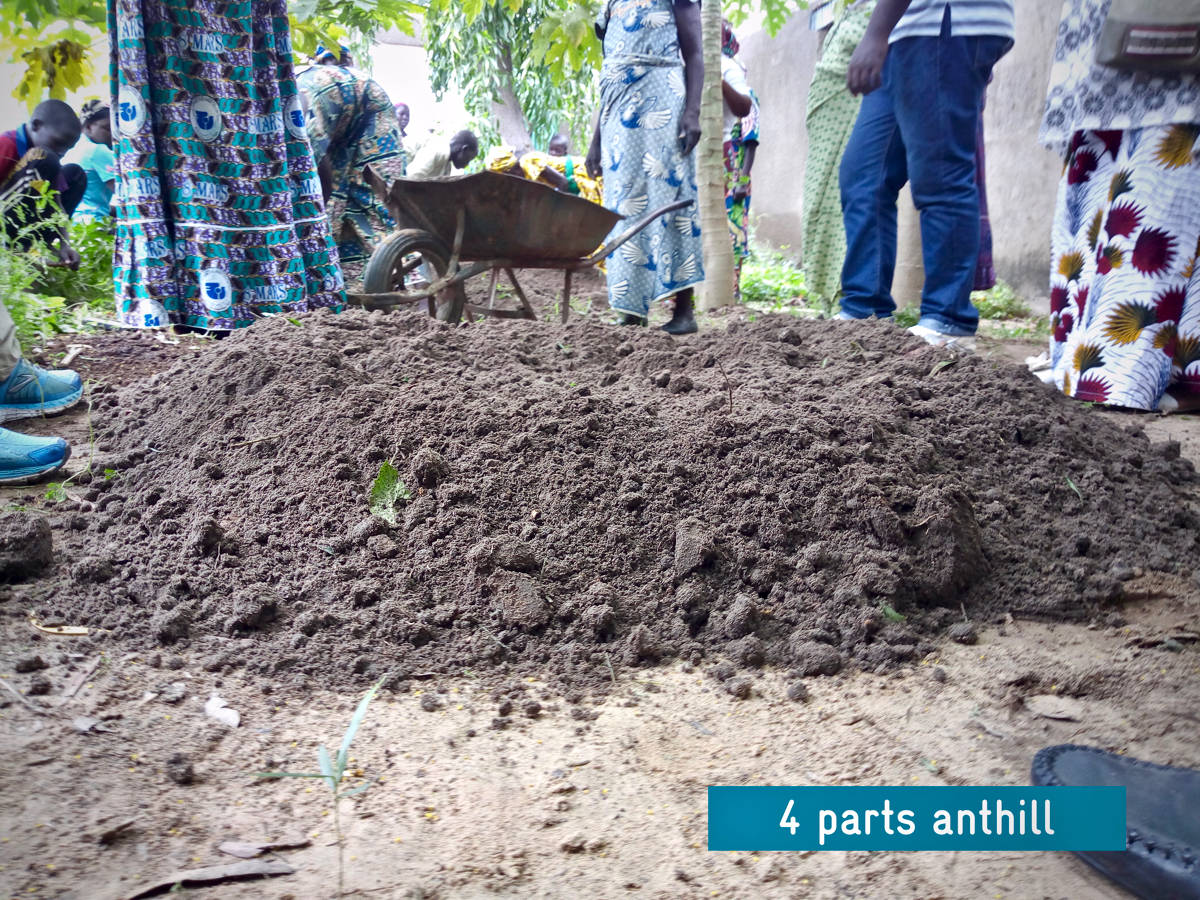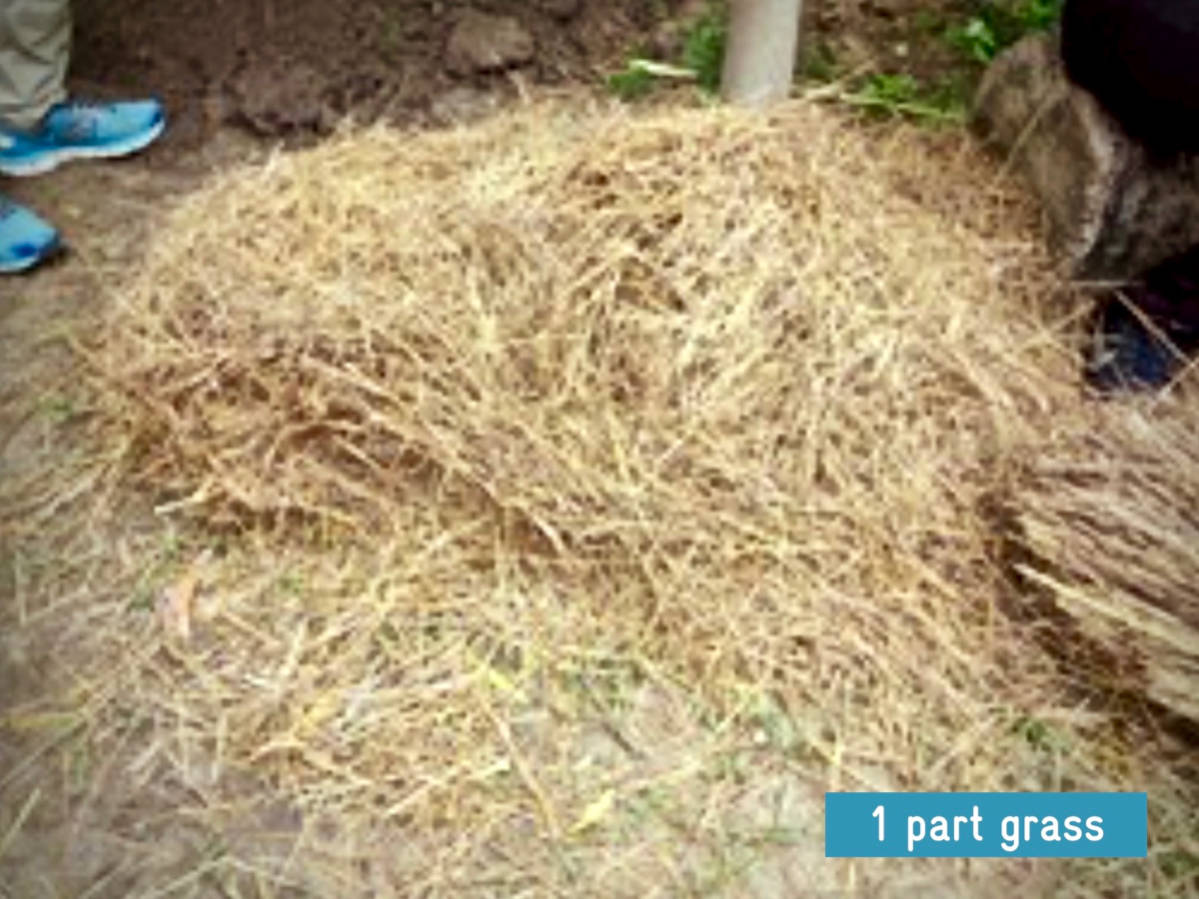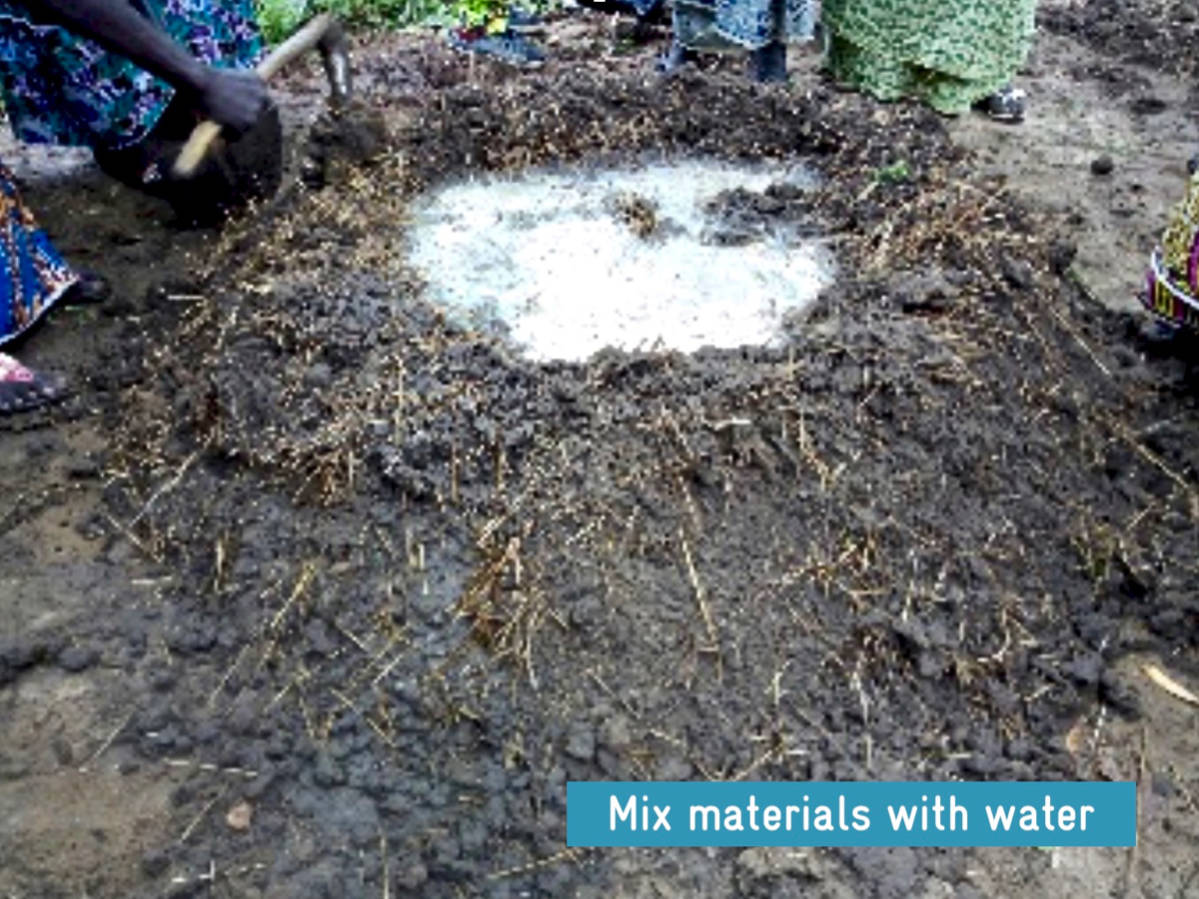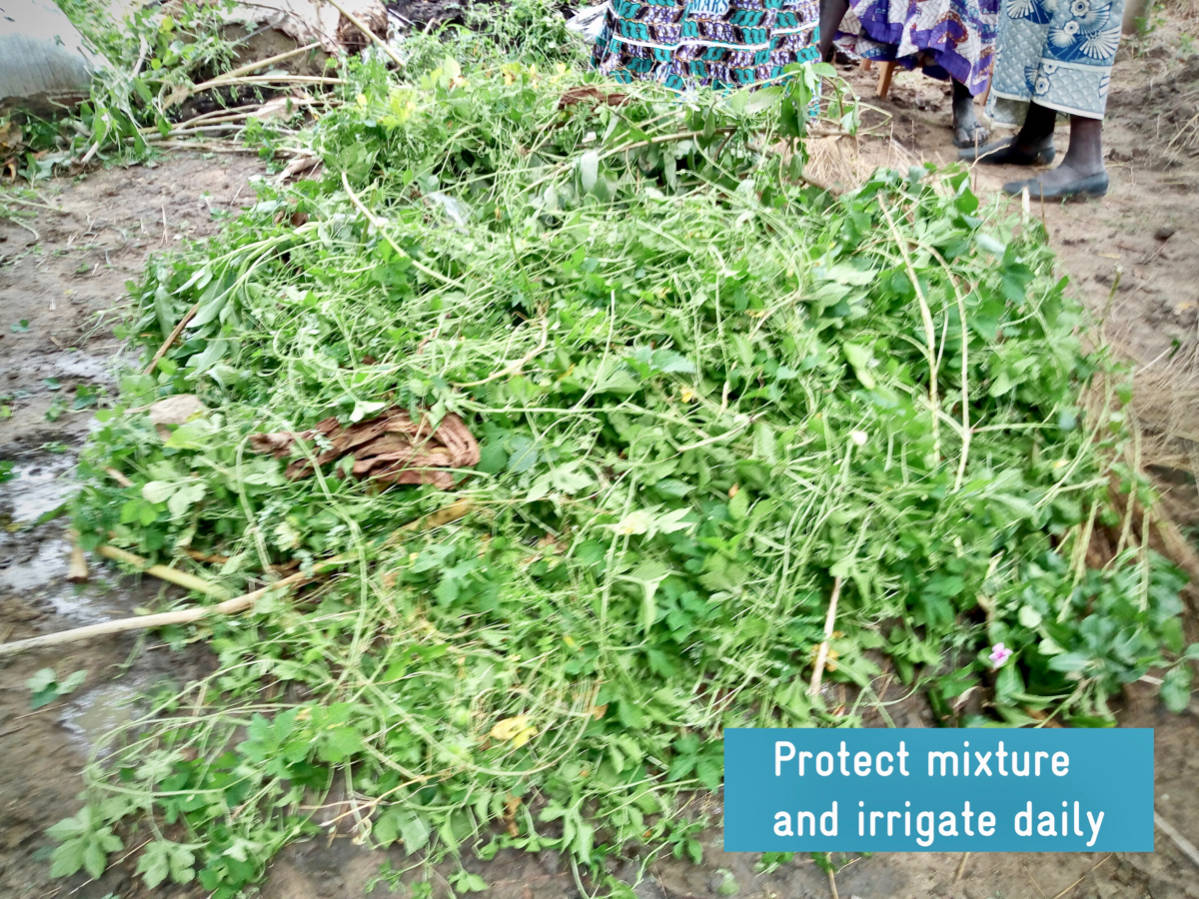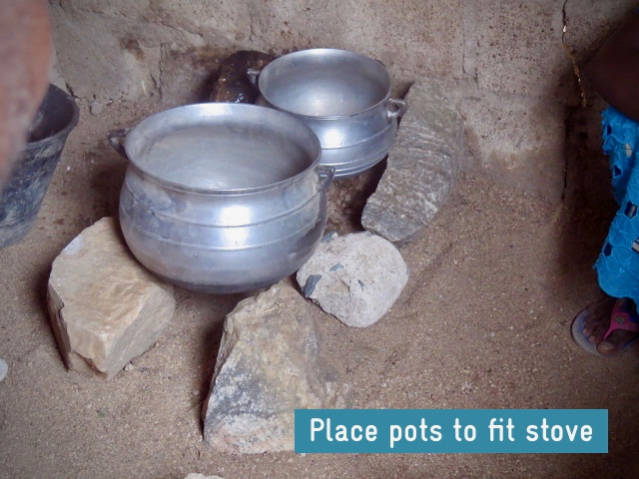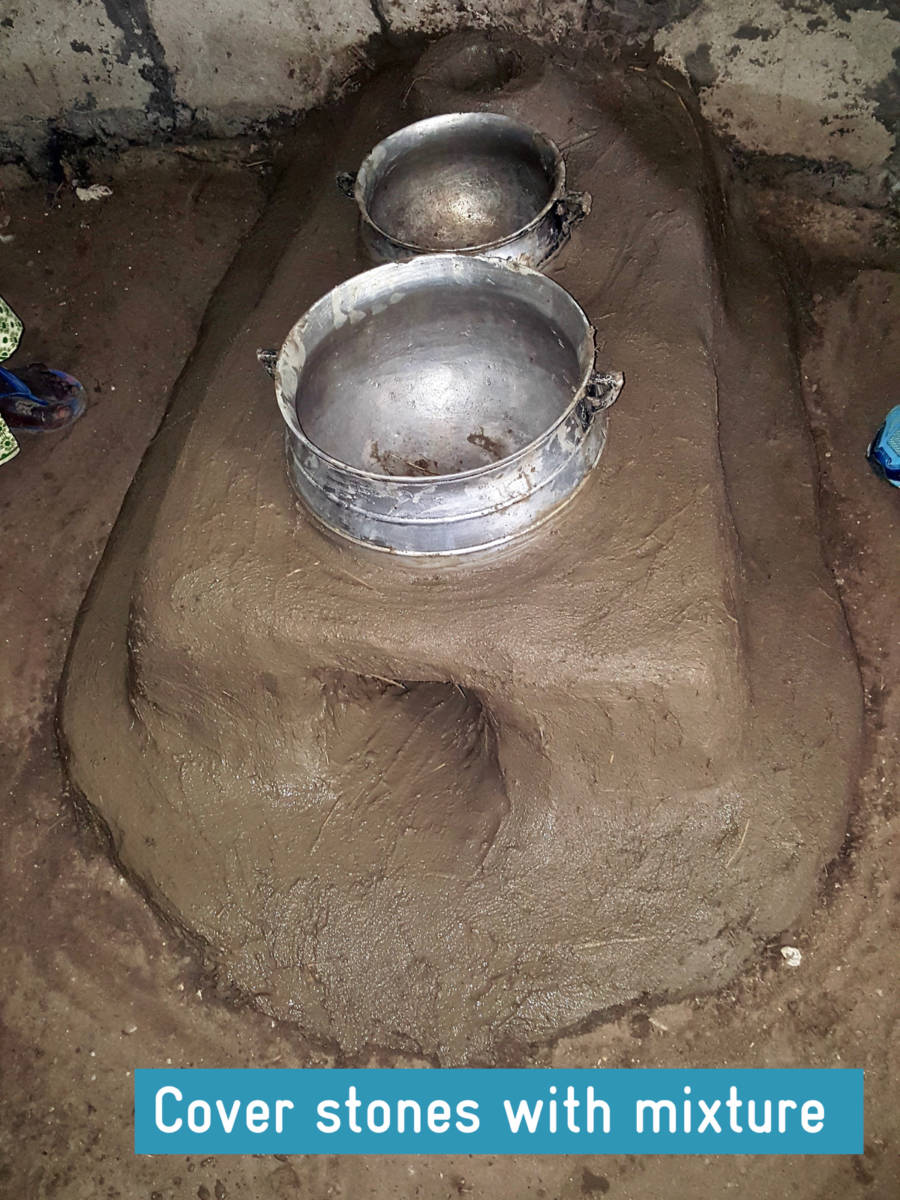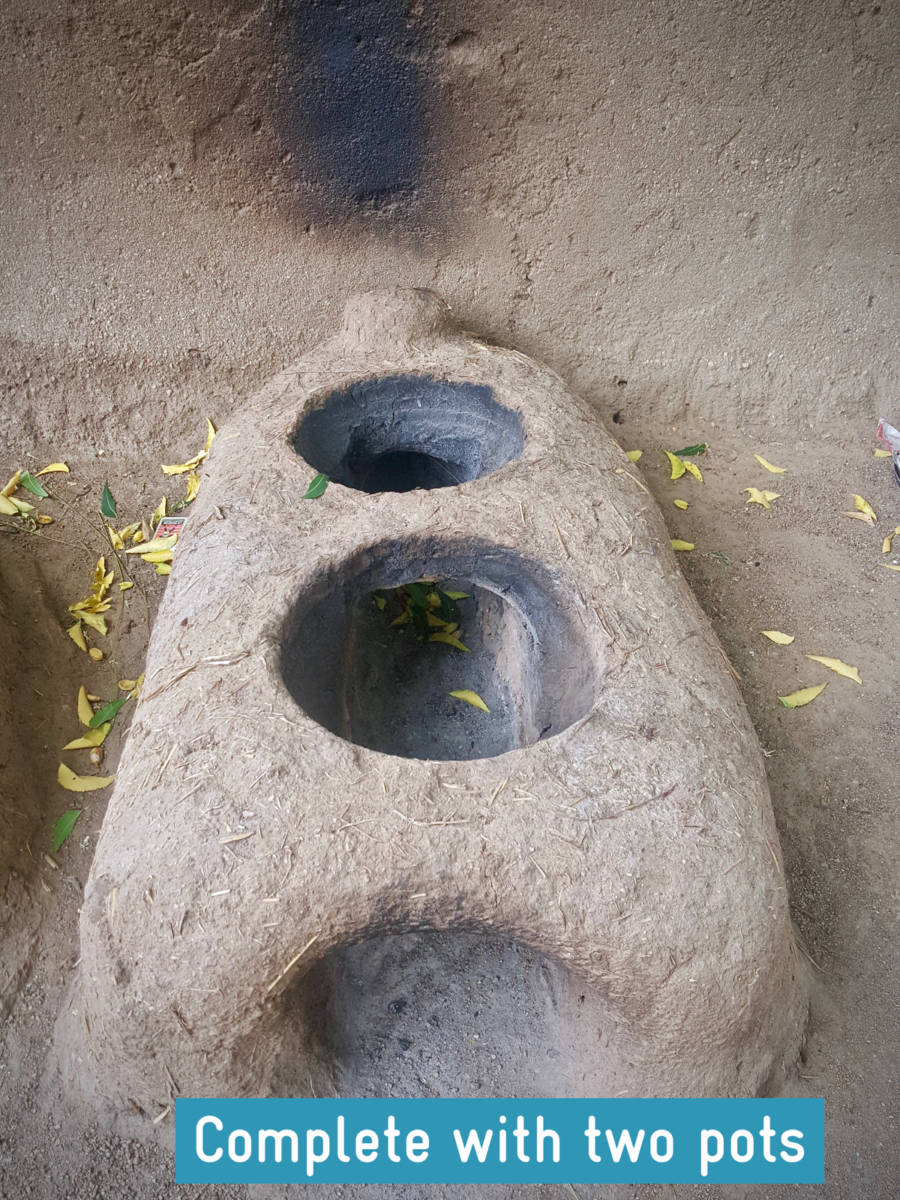With Improved Cookstoves Towards the SDGs
Read about the experiences made with relay women in Cameroon’s Far-North Region
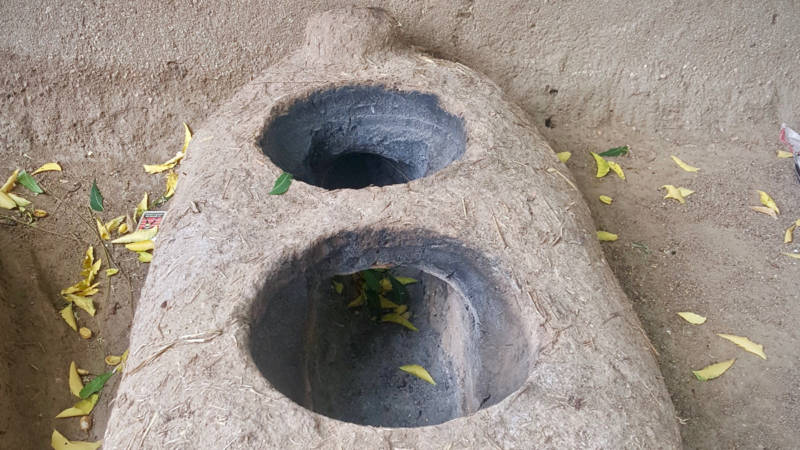
A self-made improved cookstove
Being situated in the Sudano-Sahel climatic zone, the Far-North Region is characterized by highly degrading environment due to abusive exploitation of the natural forest and underground waters. The extreme pressure exerted on these natural resources is caused by many factors, especially:
- Excessive exploitation of the forest as an energy source for domestic and commercial use
- Environmental unfriendly farming systems, such as burning, felling of trees, poor water management practices and bushfire
The combination of above practices has increased the pressure on the natural resources, leading to their destruction and consequently means a further plunge into poverty for many people, both in the rural and the urban areas.
The harvesting of firewood is the main way to exploit, and to destruct, forest resources in this region. 95 percent of households in urban areas and 100 percent in rural areas use firewood as their main energy source.
The demand for firewood in the region is 1,519,895 cubicmeters annually. Supply on the other hand provides only 1,131,963 cubic meters per year, leaving a gap of 387,932 cubic meters every year (Stratégie de Modernisation de la Chaîne de Valeur Bois-énergie dans la Région de l’Extrême-Nord, Cameroun 2017).
Only few people in the towns have access to more modern sources of energy such as kerosene, electricity or gas, since it is more costly and therefore prohibitive for many to purchase. The national government has started some major projects to improve environmental issues in the north. They aim to reduce the pressure on the forests and increase the supply of firewood. Examples are:
- “Operation Sahel vert” of MINEPDED, which restores degraded land and is engaged in distributing improved cookstoves (ICS) to households
- The tree planting project of MINFOF
In addition to government efforts, NGOs and CSOs are involved in producing and distributing improved cookstoves to the population. With their Forestry and Environment Project ProPFE in the region, GIZ is also part of the efforts. In order to contribute towards combatting the alarming degradation of forest resources, the project has started building and distribution of improved cookstoves to households on large scale.
The improved stoves are viewed as a means to significantly reduce firewood consumption and therefore mitigate the effects of climate change and promote sustainable management of forest resources.
Improved cookstoves contribute to the achievement of Sustainable Development Goals
- SDG1: End extreme poverty in all forms by 2030
- SDG2: End hunger, achieve food security and improved nutrition and promote sustainable agriculture
- SDG3: Ensure healthy lives and promote well-being for all at all ages
- SDG7: Ensure access to affordable, reliable, sustainable and modern energy for all
- SDG13: Take urgent action to combat climate change and its impacts
- SDG15: Protect, restore and promote sustainable use of terrestrial ecosystems, sustainably manage forests, combat desertification, and halt and reverse land degradation and halt biodiversity loss
It is in line with reducing firewood consumption and achieving the above SDGs that GIZ has set up a sustainable system for the distribution of improved cookstoves. It entails making use of twenty relay women trainers (RWTs) on the construction of domestic improved cookstoves who are based in the vicinity of the interventions (quarters and villages) and are directly supervised by two female relay women coordinators (FRCs). Each of these FRCs supervises ten RWTs who are responsible for the construction of a minimum of 52 stoves per month in their village of intervention.
Figure 1: The production and distribution of improved cookstoves (ICS) flowchart
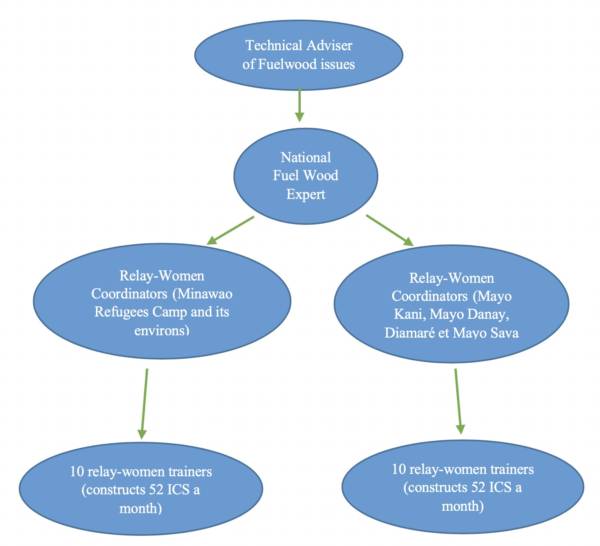
The aim of the project was to significantly reduce the firewood energy consumption by promoting the building and use of inproved cookstoves in the Far-North Region, with the long-term goal of preserving the environment and mitigating the energy crisis.
Particular aims
- Increase the building and distribution of improved cookstoves within households in order to reduce energy consumption, preserve the forest and reduce the effects of climate change
- Enable household members to realize the benefits associated with the use of an ICS; that is on the socio-economic level the gain in time, an increase household income etc., and on the health level less respiratory conditions and other health hazards
- Show how the use of RWTs and FRCs can increase the construction and use of ICSs
- Demonstrate how the use of ICSs contributes to achieving SDGs 1, 2, 3, 7, 13 and 15
Approach to implementation
Several approaches have been used to implement the ICS project. During the period between November 2018 and July 2019 the FRC and RWT approach was used in Diamare, Mayo Kany, Mayo Danay, Mayo Sawa and Mayo Tsanaga divisions of the Far-North region.
Figure 2: A map indicating the zone of intervention
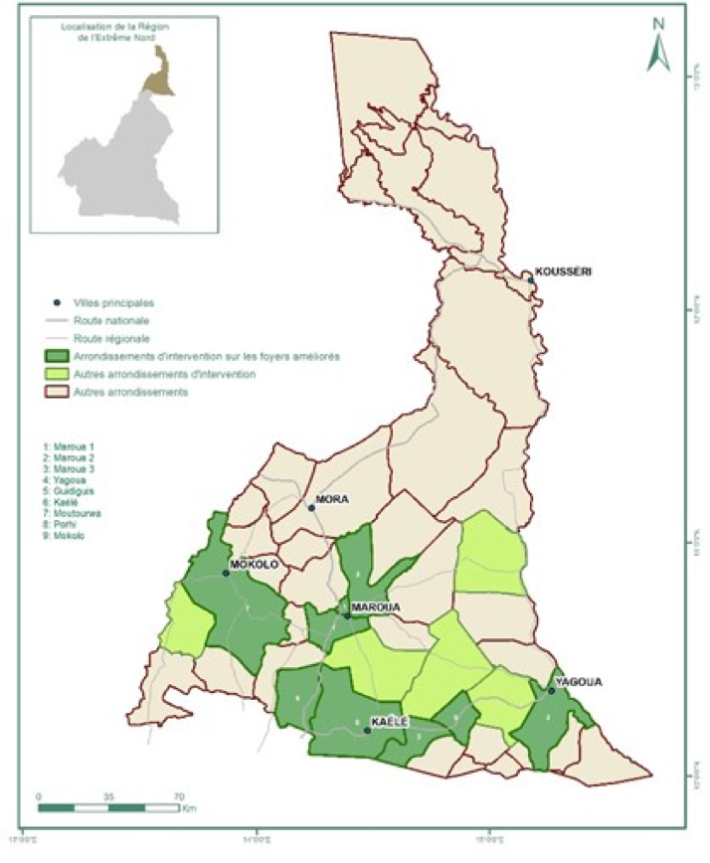
The approaches used in achieving our objectives
Regrouping: This method means gathering the women who are in the same area or the same quarter in small groups of 3, 4, 5, 6 beneficiaries. This is to ensure a certain quality of stoves and increases the numbers built.
Continuity: This entails working with volunteers present during first training. The coordinator or the “relay-trainer” builds for each volunteer and the volunteers then goes on to construct for other family members or a neighbor, and the chain goes on. This leads to a high rate of replication.
Observatory: The observatory method entails inviting, sensitizing and training women who were not able to attend the training with those who were present during practical sessions. Thus in regrouping or continuity methods, there must be volunteers as observer who will replicate the construction process.
Mixed: This is a blend of two or three of the above methods within the same locality to achieve better results within a very short period.
The process of constructing improved cookstoves for domestic use
The process starts with sensitization taking place in the village both with the RWT and FRC. This is followed by gathering the building materials needed for the training by the RWT and those to be trained. These materials are easily found in the area. They are soil from a termite hill or anthill (four parts), animal dung (two parts), grass (one part) and water. For every four parts of anthill, we add two parts of animal dung and one part of grass. This is properly mixed with water to form a homogenous mass, which is then left to decompose for one week. The mortar mixture is covered and irrigated on a daily basis.
Preparing the mortar mix
Click on picture to enlarge
After one week the decomposed mixture is thoroughly mixed through again. The construction site is selected, preferably in the kitchen to protect the stoves from damage by adverse weather conditions.
The building starts with the placing of the stones. The most regularily used pots will give the stove the right dimensions. Next, the mixture is used to cover the stones on all sides. Any hard materials (iron, sticks) keep the two pots from touching each other. A slope slanting upwards (towards where the chimney is formed) is created in the inside section of the stoves to allow for a smooth exit of the smoke. The chimney is then build at the opposite end of the door or entrance of the stove. The open parts around the pots are all covered with the mixture. This is to prevent wind from blowing the flame during cooking. The pots can now be removed and the newly constructed stove needs to dry for three days before its first use. The entire building is done with all participants present.
Stages of building the actual improved cookstoves
Click on picture to enlarge
After building sample ICSs, the participants can build a stove under the guidance of the FRCs and RWTs (hands-on training). Finally, the participants build their individual stoves with the help of the RWT.
Why are the improved cookstoves important? — Three different aspects
Ecological aspect
The use of the stoves reduces firewood consumption in the households. This reduces the pressure on forest resources and subsequently deminishes the effect of climate change and preserving biodiversity. The forest is preserved and is able to reduce ozone layer depleting gases from the atmosphere. This is in line with SDG13 (take urgent action to combat climate change and its impacts) and SDG15 (protect, restore and promote sustainable use of terrestrial ecosystems, sustainably manage forest resources, combat desertification and reverse and halt land degradation and halt biodiversity loss).
Socio-economic aspect
Using the stoves reduces the costs for firewood as the quantity used for cooking is considerably less. Families are now able to save cash, which can be used for improving their livelihood (improve family nutrition, education of children, buying of some basic household needs). Connected to SDG1 (end extreme poverty in all forms by 2030) and SDG3 (end hunger, achieve food security and improved nutrition and promote sustainable agriculture).
This model of a domestic ICS is made from materials that are readily available locally, at little or no cost. The users are trained and are able to subsequently build and repair their stoves, leading to ownership of the process. This is an affordable and sustainable method to reduce firewood consumption. This ties with SDG7 (ensure access to affordable, reliable, sustainable and modern energy for all).
The use of the stoves reduces the quantity of firewood used in preparing food, reducing the time spent by women and girls in rural areas for collecting wood. They can now fetch wood once in a week that will be enough for the entire week unlike fetching on a daily basis when using traditional cooking methods. This gives time for these women to carry out other activities like farming, taking care of the children, performing other household chores and even carrying out income generating activities.
Health benefits
The use of the stoves means less smoke inhalation, it reduces the occurences of respiratory and eye diseases and minimizes risk of burns. The ICS is well protected and the smoke from the cooking is channeled away from the user. This contributes to achieving SDG3 (ensure healthy lives and promote well-being for all at all ages). Women using the stoves attest to the fact that they look cleaner than before and their visits to the hospital due to breathing problems are less.
Figure 3: Graph showing the number of ICSs built per year
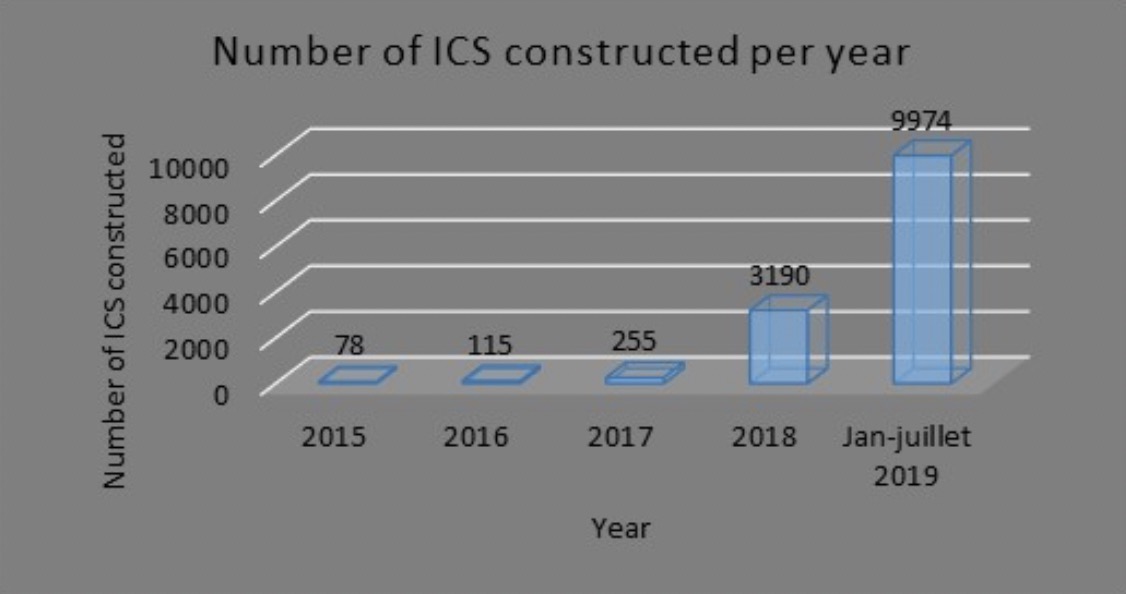
The introduction of the FRCs and RWTs in November 2018 and the construction and use of ICSs has more than doubled, as shown in the graph. The number of stoves has increased from 3,190 to 9,974 in July 2019. This has allowed to sequestrate about 5244.04 TeqCO2 and preserved approximately 449.23 ha of forest.
Conclusion
The building and use of improved cookstoves is a major means to mitigate the pressure on the forest resources if properly constructed and put to use.
FRCs and RWTs can enhance and increase the construction and use the stoves, where there are building materials readily available.
The authors
The copy was prepared by Emmanuel Fonsa Teboh, Soureya Bobbo Oumarou and Tchigankong Desire.

